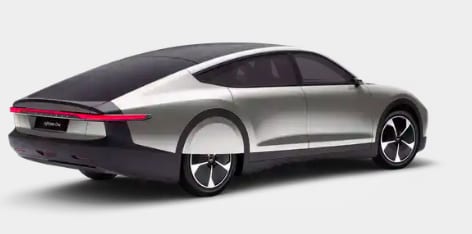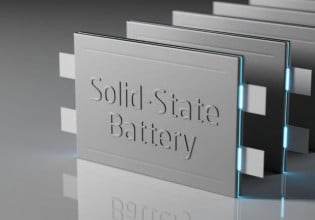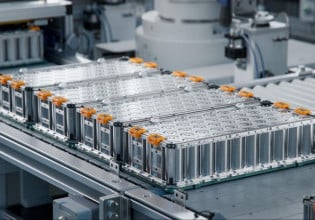Lightyear Unveils Long-Range Solar Car; Lets Buyers Reserve Vehicles for 2021 Release
Lightyear introduced what the company claims to be the first long-range solar car. A select audience of partners, customers, investors, and press attended the special presentation in the TheaterHangaar in Katwijk, the Netherlands.
"This moment represents a new era of driving," said Lex Hoefsloot, CEO and co-founder of Lightyear. "Two years of dreaming, thinking and working hard have led to this milestone, which is a giant leap towards achieving our mission of making clean mobility available to everyone."
Founders of the company are alumni Solar Team Eindhoven, which won the Bridgestone World Solar Challenge in 2013, 2015 and 2017. Since its launch, Lightyear has reportedly received several awards, grants, and has attracted support from principal investors.
"This allowed us to develop a working prototype for the first long-range solar car in just two years. We have already sold over a hundred vehicles. With Lightyear One, we want to show that our technology enabled us to build one of the most sustainable cars on the market that also offers great convenience."
Lightyear One according to the company, was engineered from the beginning with a radically different perspective. In addition to solar power, the vehicle can be charged from regular sockets.
"We all have a performance background and with that we focus relentlessly on to optimize efficiency and safety," Hoefsloot said.
Lightyear began the design process from scratch, following not conventional EV designs but only the laws of physics, to design a car that "gets the most out of every ray of sunshine," Hoefsloot continued, "The main goal of the car is to fill in where electric cars fall short. Research has shown that range and the lack of charging options are still the top concerns that people have when considering electric cars."
"We are solving these issues with what we call ultra-efficiency. On one hand, that will lead to an exceptional range of 725 km (WLTP) on a relatively small battery. On the other hand, it can charge directly from the sun because its energy consumption is much lower, generating up to 20,000 km worth of energy per year. "
 Lightyear One can plug into a regular socket in Europe.
Lightyear One can plug into a regular socket in Europe.
"Moreover, all of the charging options out there become easier to use because you get a lot more range for the same amount of energy charged. So effectively, you charge a lot faster from any power outlet. You can charge up to 400 km per night from ordinary 230V sockets. That's great for road trips because you don't need charging infrastructure," Hoefsloot added.
The company constructed the car with high tech materials to have the lowest weight possible while maintaining stringent passenger safety. Four independently driven wheels drive the EV, so no energy is lost in transit from the engine to the wheel. The integrated solar cells cover five square meters of the roof and the hood. The solar cells are in safety glass so strong according to the company, that a fully-grown adult can stand and walk on them without producing dents.
In addition to allowing solar charging while driving or at rest, Lightyear One can be charged at a (fast)charging station or can use a regular outlet.
 Closeup of solar cells on the hood of Lightyear One
Closeup of solar cells on the hood of Lightyear One
During the unveiling of the prototype, Lex Hoefsloot emphasized the potential importance of the vehicle in terms of climate change.
"Climate change is one of the biggest problems that we humans have faced in our history. It is such a frightening development that it is almost paralyzing. We decided to do the opposite; as engineers, we believed we could do something. Lightyear One represents a huge opportunity to change mobility for the better." Hoefsloot emphasized that nature has been a great source of inspiration. "For centuries, we have lived in balance with nature. With the technologies of today, we have the opportunity to do so again. By starting from scratch and using the laws of nature as a guideline, nature becomes our greatest ally in developing ultra-efficient designs."
According to Hoefsloot, this is just the beginning. While the new models will target the luxury vehicle market, the company plans to gradually reduce the unit costs.
"Since new technology has a high unit cost, we have to start in an exclusive market; Lightyear One is the first long-range solar car and has staggering specifications. The next models we plan to develop will have a significantly lower purchase price. In addition, future models will be provided to autonomous and shared car fleets, so the purchase price can be divided amongst a large group of users."
Hoefsloot insists that the EV will have a low operating cost. Eventually the company wants to make the cars more affordable to drive than the gas required for a regular combustion engine vehicle.
"Combined with the low operating costs of the vehicle, we aim to provide premium mobility for a low price per kilometer. A third, final step will be to provide truly sustainable cars that are more affordable to use than the cost of gas you need to drive a combustion car. This will prove to be our most important tipping point in the near future, and it will pave the way for a car fleet that is one hundred percent sustainable."
Availability
Lightyear intends to ramp up production of the Lightyear One in 2021. Already, the company says that the first 100 cars have been reserved. Through the Lightyear, buyers can reserve one of the 500 Lightyear Ones for a reservation fee of €119,000 (expected delivery in 2021).







